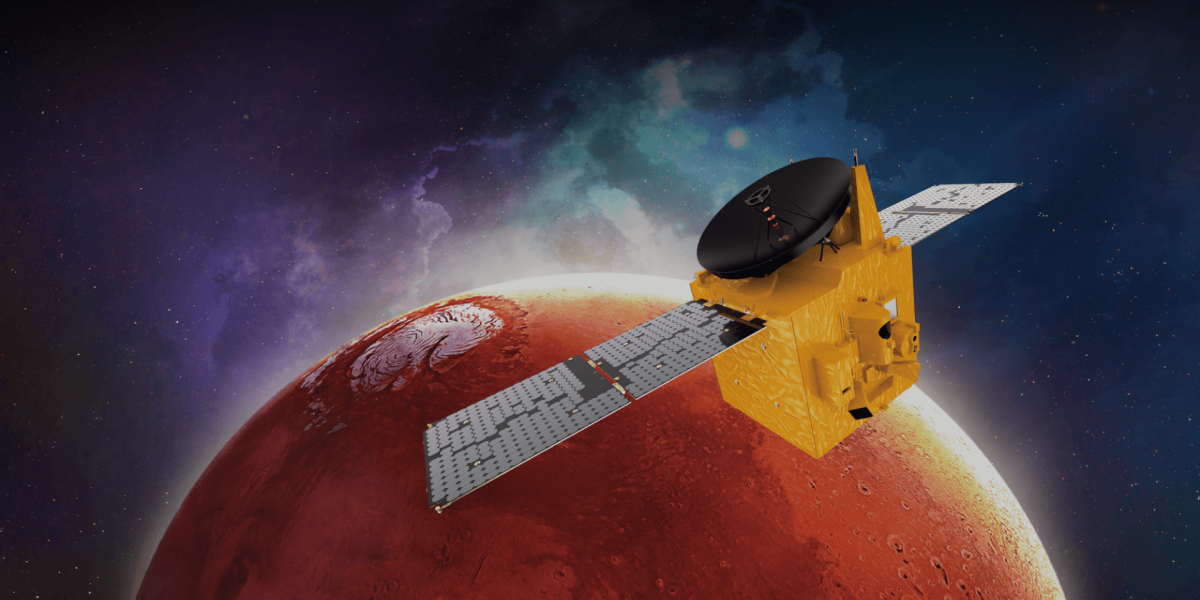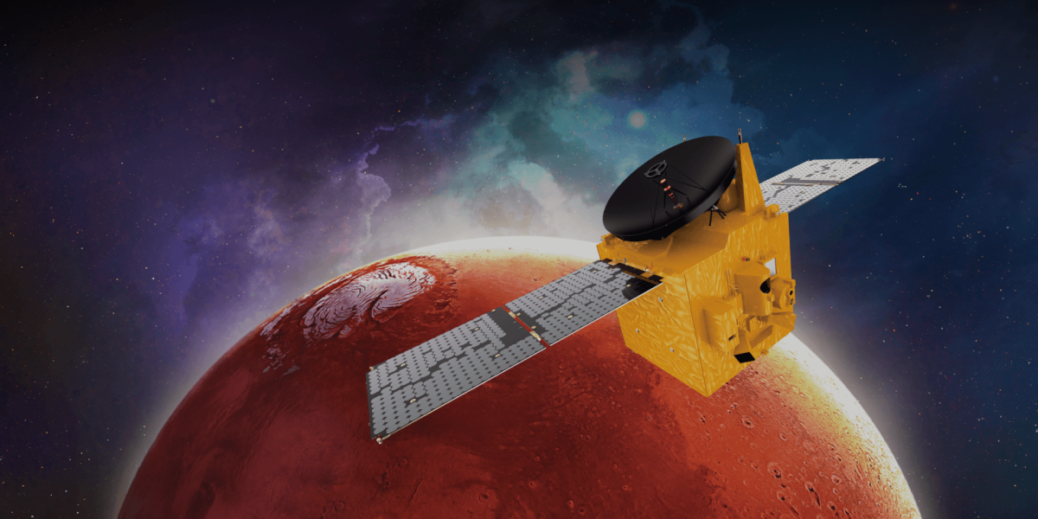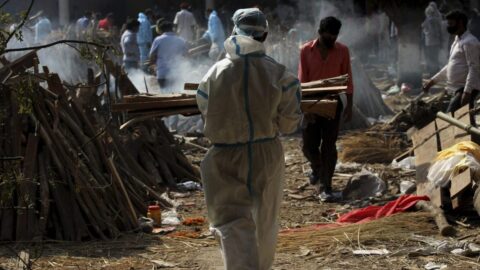
“A lot of the engineering emphasis has been on making the [Mars orbital insertion] event completely autonomous,” says Pete Withnell, a scientist at the University of Colorado, Boulder, who is working with the Hope mission. “During the event, we are observers. We get to see what’s happening, but we do not get to interact in real time.”
Mission control expects to receive a signal shortly after the burn that should indicate whether Hope has fallen into a Martian “capture orbit,” although if they miss this signal, they’ll have to wait another hour or so as Hope is eclipsed by Mars and waits to emerge from around the bend.
“This is the riskiest phase of the project,” says Omran Sharaf, project manager for the mission, adding that the propulsion system for the mission is “something you cannot really test on Earth 100%, because you cannot really simulate the environment.”
Should everything go as planned, the mission will transition from its “capture orbit” into its “science orbit” over the next few months, using that time to turn its instruments on and calibrate them for formal investigations. That transition should be completed by around the end of April or early May. According to Al Amiri, the team hopes to make the first science data available to the research community by early September.
More than a single mission
The risks are actually the point. One of the UAE’s biggest objectives through the Emirates Mars Mission has been to spur a young generation of scientists and engineers to get into space systems development in order to help the UAE enter the space economy. Like many other countries, the UAE wants to capitalize on the rise of small-spacecraft development and “create new business ventures in space,” says Al Amiri. She says she has witnessed a swell of enthusiasm among science and engineering students, who are now taking the idea of entering the space industry seriously.
Sharaf explains that some of the mission’s hardware was developed and manufactured by UAE companies. “It was a very good kind of test platform for us to understand the gaps that we have within our ecosystem and how we can design a program for our future missions which better integrates the private sector,” he says.
And it made sense to try for Mars rather than a high-tech demo in Earth’s orbit or even a mission to the moon. “It was a risky approach,” says Sharaf. “But as a young nation, we need to catch up. When it comes to technology and science, the learning curve is not really linear—it’s very exponential. It becomes much more difficult to catch up in the future. And this is why we’ve started to go with a Mars shot.”
When asked what a failed orbital insertion would mean for both the Hope mission and the UAE space program as a whole, Al Amiri’s answer was simple: “We will continue.” The “wild experiment,” as she calls it, has already set the ball rolling.





Recent Comments